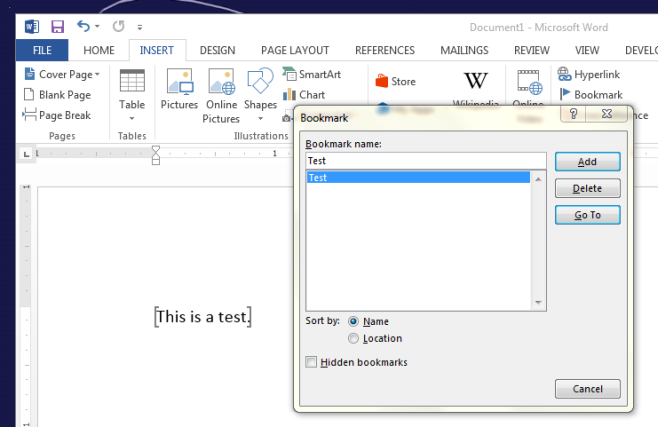

This will update the default hyperlink formatting, including any links you had added to the document previously.
#REMOVE HYPERLINK IN WORD 2013 HOW TO#
How to Format Hyperlinksīy default, Microsoft Word formats links with blue, underlined text. If you then click OK when you’re done, the link will be updated automatically. The destination of the link (i.e., file path or URL).The text that will be used for the hyperlink.In the window that opens, you can then change both: You can edit a hyperlink in the same way as you would any text in a document: simply place the cursor in the hyperlinked text and type.Īlternatively, if you right click the link you can select Edit Hyperlink. Thank you for subscribing to our newsletter! How to Edit Hyperlinks Keep in mind, though, that this link will only work on your computer/network, since this is where the destination file is stored. To link to a file, simply select it via the Insert Hyperlink menu and click OK. You can use this same process to link to another file on your computer. This will open the destination in your default web browser. To test the link, hold CTRL and left click (or right click and select Open Hyperlink). The highlighted text will then become a hyperlink. Type the URL for the link destination into the Address field.Go to Insert > Links > Link (or right click the text and select Link).Highlight the text you want to use as a link.However, most of the time, you’ll want to embed a link in the text. For instance, if you type a web address and hit space or return, MS Word will automatically format it as a link. Whether you’re writing website copy, where hyperlinks enable navigation, or simply adding links to useful internet resources in a document, Microsoft Word makes it simple. And with Microsoft Word, it’s easy to add a hyperlink in a document.īut how does this work? In this post, we look at how to add a link in Microsoft Word, as well as how to edit and remove hyperlinks in a document. On that level at least, electronic media has a distinct advantage. But one thing that you can’t do on paper is link to another book. You may then want to use the "Robbins/Mayor" macro to split the generated documents.How to Add a Hyperlink in a Microsoft Word Document

The resulting formulae can then be pasted into a macro and run on the output document. If the includes a query string, you may find you want to build it using a formula, based on other data in the source. You need to amend, and to the appropriate cell references. Into a blank column in the first row, and fill down. You then need to put your source data into Excel (if that isn't where you have it already) and put this formula ="Set Rng = ActiveDocument.Content: FindText:="""&""": Anchor:=Rng, Address:="""&""", TextToDisplay:="""&"""" In your table of source data, you need columns place marker, text_for_display, hyperlink The trick is to add a place marker (text that serves as an ID) wherever you want a hyperlink. Note that this only works for DOCUMENT MERGES, not for EMAIL MERGES, since it relies on processesing the output document. There is a simple alternative - indeed the only alternative AKAIK if you want the hyperlink to vary AND the text that is displayed to vary too (not an unreasonable requirement). I have had limited success with the other suggestions - basically, Word is buggy in this area. I like to style the period text color to white so it looks invisible.You will see the correct link in the address field for each record. To check that the hyperlinks are mapping, right click on the link display text and click edit hyperlink.Make sure not to delete the period (this is important). Put the insertion point just before the period in ‘Error! Hyperlink reference not valid text.’ and delete all the text except for the period.You now have Error! Hyperlink reference not valid text. The text Error! Hyperlink reference not valid In the Field names list, click Hyperlink,Īnd then click OK.On the Insert menu, click Field (under Quick Parts in later office versions).


 0 kommentar(er)
0 kommentar(er)
